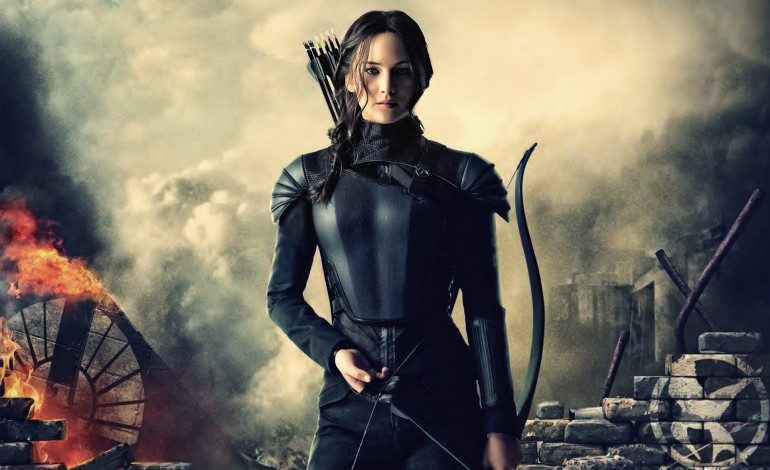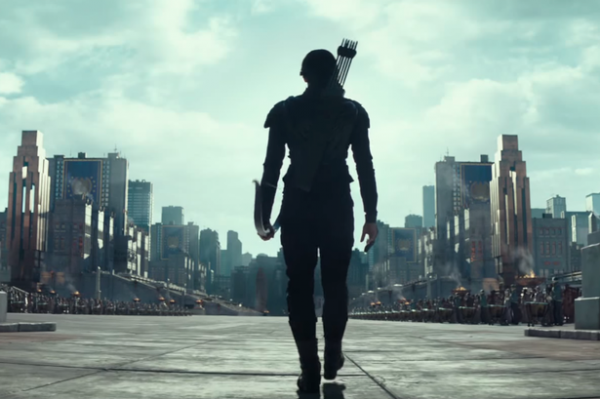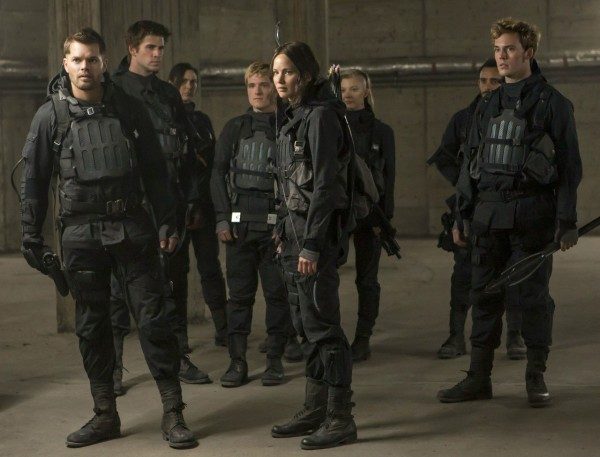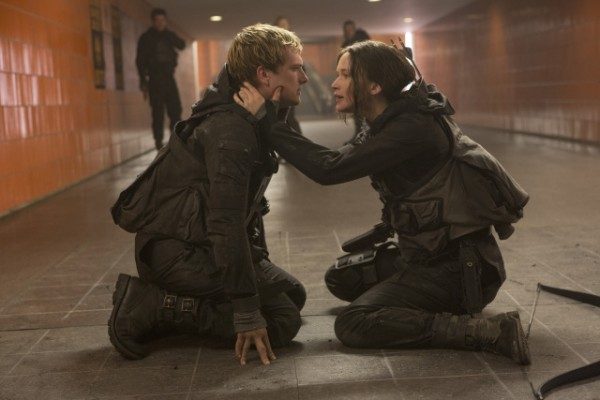

Long awaited and long-titled, the final installment in The Hunger Games series- Mockingjay – Part 2 brings audiences a far less tedious experience. This last film is a perfect ending to a nearly outstanding young adult franchise that will likely draw praise from fans and non-fans alike. It ups-the-ante in terms of story, action, visuals, and performances – so much so that its predecessor- Mockingjay – Part 1- seems like it will go down as the series’ sacrificial lamb (no matter how well-constructed or well-acted it was). This here folks is the definition of a crowd-pleaser, and in the best ways possible.
Adapted from the third book in the Suzanne Collins YA series by Peter Craig (The Town) and Danny Strong (Lee Daniels’ The Butler), Mockingjay – Part 2 picks up almost immediately after the final scene in Part 1 as Katniss (Jennifer Lawrence) is recovering from a violent encounter with a Capitol-brainwashed Peeta (Josh Hutcherson). In an effort to take matters under control and prevent President Snow (Donald Sutherland) from doing any more damage to the districts as well as the people she loves, Katniss enters the battlefield alongside Gale (Liam Hemsworth), Finnick (Sam Claflin) and other District 13 rebels to break into the Capital and end Snow’s oppressive reign once and for all.
As always, the odds are stacked against Katniss and co. as Snow’s game-makers have planned a real-life Hunger Games arena, rigging the Capitol streets with new terrifying traps and dangers to take them out. Besides literal obstacles, Katniss is also faced with both embracing and overcoming her designated symbolic role as The Mockingjay in order to actively take part in the fight.
It is in the idea of The Mockingjay and all the responsibility that comes with the title that the film finds its juice. Returning director Francis Lawrence made this last film with two clear areas of focus in mind – those being in the story’s themes and ideology as well as its elevated action sequences. The big ideas of The Hunger Games, including family, corruption, the ethics of war, and individuality (among others), take the stage in telling the final story. Craig and Strong do an excellent job in tying up each loose end of the series while painting a balanced portrait of good and evil and illustrating a satisfyingly realistic end to Katniss’ journey.
What especially sets this film apart from the three that came before it are the higher level heart-pounding action sequences. For example, if you sat down and watched the franchise’s original film and then immediately skipped to Part 2, there’s a clear aesthetic and tonal difference between graphics. Specifically, this movie moves into horror-suspense territory in an almost shocking, but incredibly entertaining way making it both the most violent Hunger Games we’ve yet to see as well as the most glorious; this aggressive high-stakes atmosphere creatively bodes well for the scenes in which some beloved characters die (fans of the books unfortunately know exactly who).
When looking at the film’s performances, you could almost say that the actors showed up a little too well, delivering better acting than a franchise film necessarily calls for. Lawrence expectedly goes above and beyond, neither overplaying Katniss’ power and influence nor underplaying her youth and naiveté. This last entry also required a huge character shift for Peeta who struggles throughout the film to overcome the violent mental blocks ingratiated by the Capitol. This called for Hutcherson to reach down deep into a lot of conflicting emotion, and he impressively bleeds Peeta’s inner turmoil right onto the screen. Besides more exceptional performances from the likes of Julianne Moore as President Coin or Woody Harrelson as Haymitch, one actor that will be a welcome surprise is Jena Malone in her role as Johanna. She turns her semi-ruthlessness into a complexly relatable trait and makes her small presence largely felt both in terms of character and the story’s individuality and rebel motifs. Fans will also be relieved to see that the late Philip Seymour Hoffman’s role as Plutarch Heavensbee was not significantly diminished by the actor’s passing.
The only misgiving that viewers may have leaving the theater is the itching feeling that Mockingjay could have been one single film, with Part 1 possibly being covered in the film’s first act. Looking back, that movie primarily covered build-up to the District’s war against the Capitol, as well as explored Katniss’ role as The Mockingjay and extended her emotional journey. My thought, however, is that this film hit it out of the ballpark so absolutely that I am beginning to come around and feel the need for Part 1 as a filler. Nearly every young adult film franchise in recent history has attempted something similar – Harry Potter, Twilight, and Divergent waiting in the wings. Whether the two-parter finales were necessary for those stories is a conversation for another time, but I think most will eventually agree that it worked for The Hunger Games.
Verdict: 5 out of 5
I am almost a bit reluctant in giving full marks to a big-budget franchise film of this kind, but I have to admit that Mockingjay – Part 2 deserves it. Whether or not this genre or plot is every moviegoer’s cup of tea, the film’s screenplay, performances, and visuals are completely solid through and through. Audiences will be on the edge of their seats for this one. Its dynamic action, real-world consequences, and individual emotion round out the series effortlessly and audiences will likely be quite remiss in saying a final goodbye to The Girl on Fire.




